
|  |  |  Health & Beauty | June 2009 Health & Beauty | June 2009  
What’s a Chakra?
 Marla Hoover - PVNN Marla Hoover - PVNN

Chakra is a Sanskrit word that translates into wheel or disk. However a chakra is also thought of as a concept referring to wheel like vortices. Much of the original information on Chakras comes from the “Upanishads”, Hindu scriptures that constitute the core teachings of the Vendanta, Hindu philosophy, which are difficult to date because they were believed to have been passed down orally for approximately a thousand years before being written down for the first time between 1200-900 B.C.E.

Judith Anodea, author of “Wheels of Life: A User’s Guide to the Chakra System” makes this definition: “A chakra is believed to be a center of activity that receives, assimilates, and expresses life force energy. The word chakra literally translates as wheel or disk and refers to a spinning sphere of bioenergetic activity emanating from the major nerve ganglia branching forward from the spinal column. Generally, six of these wheels are described, stacked in a column of energy that spans from the base of the spine to the middle of the forehead. And the seventh which is beyond the physical region. It is the six major chakras that correlate with basic states of consciousness...”

Chakras are part of the “subtle” body and not the physical body, meaning they cannot be seen as they are energetic fields. They are more like aspects of our consciousness in the same way that auras are, but are more dense that auras but less dense than our physical body. The seven main chakras are aligned along the spinal column from the base to the top of the head. They are said to be connected to every organ, gland and body system. This is because they interact with the physical body through two major vehicles, the endocrine system and the nervous system. Each is associated with one of the seven endocrine glands and with a group of nerves called a plexus.

The seven chakras are thought to vitalize the physical body and to be linked with interactions of a physical, emotional and mental nature. They are considered to be the pathway of life energy or prana also called shaki or qi, which is thought to flow among them along other pathways called nadis. The function of the chakras is to spin and draw in this energy to keep the spiritual, mental emotional (subtle) as well as the physical health of the body in balance.

This energy is said to come from sunlight which consists of many different forms of electromagnetic waves and light rays, both visible and invisible. As we know light rays can be broken down into the visible spectrum by a prism giving us the seven different beams of color. Thus, light consists of the seven color energies: red, orange, yellow, green, blue, indigo and violet. Color and light are inseparable. Each color of the visible light rays has a different wavelength and vibrational frequency, which affects us differently. Red has the longest wavelength and the slowest vibrational frequency, which we innately recognize as warm and stimulating. Whereas, violet has the shortest wavelength and the fastest frequency that we recognize as a cool and calming energy. We receive light and color information through our eyes, which then stimulates the retina and its cells, rods and cones. These impulses, which travel through the optic nerve to the visual cortex of the brain via the pituitary, trigger other glands and their hormone secretion to various parts of the body. Many body functions are stimulated or retarded by light and the different colors of light and thus affect our chakra system.

This becomes even more interesting when we realize that as humans we exist within the 49th Octave of Vibration of the electromagnetic light spectrum. Below this range are barely visible radiant heat, then invisible infrared, television and radio waves, sound and brain waves; above it is barely visible ultraviolet, then the invisible frequencies of chemicals and perfumes, followed by x-rays, gamma rays, radium rays and unknown cosmic rays. Cool huh?

Each Chakra is associated with a certain color and are also visualized as lotuses/flowers with at different number of petals or segments in every chakra. The are as follows:

Sahasrara: The Crown Chakra

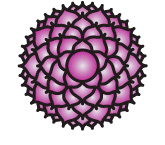 Sahasara is generally considered to be the chakra of pure consciousness. Its role may be envisioned somewhat similarly to that of the pituitary gland, which secretes hormones to communicate to the rest of the endocrine system and also connects to the central nervous system via the hypothalamus. The thalamus is thought to have a key role in the physical basis of consciousness. Symbolized by a lotus with one thousand petals, it is located at the crown of the head. Sahasrara is represented by the color violet and it involves such issues as inner wisdom and the death of the body. Sahasrara's inner aspect deals with the release of karma, physical action with meditation, mental action with universal consciousness and unity, and emotional action with "beingness". Sahasara is generally considered to be the chakra of pure consciousness. Its role may be envisioned somewhat similarly to that of the pituitary gland, which secretes hormones to communicate to the rest of the endocrine system and also connects to the central nervous system via the hypothalamus. The thalamus is thought to have a key role in the physical basis of consciousness. Symbolized by a lotus with one thousand petals, it is located at the crown of the head. Sahasrara is represented by the color violet and it involves such issues as inner wisdom and the death of the body. Sahasrara's inner aspect deals with the release of karma, physical action with meditation, mental action with universal consciousness and unity, and emotional action with "beingness".

Ajna: The Brow Chakra

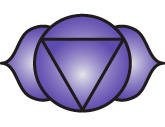 Ajina (along with Bindu, also known as the third eye chakra) is linked to the pineal gland which may inform a model of its envisioning. The pineal gland is a light sensitive gland that produces the hormone melatonin which regulates sleep and awakening. Ajna is symbolized by a lotus with two petals, and corresponds to the color white, indigo or deep blue. Ajna's key issues involve balancing the higher & lower selves and trusting inner guidance. Ajna's inner aspect relates to the access of intuition. Emotionally, Ajna deals with clarity on an intuitive level. (Note: some opine that the pineal and pituitary glands should be exchanged in their relationship to the Crown and Brow chakras, based on the description in Arthur Avalon's book on kundalini called Serpent Power or empirical research.) Ajina (along with Bindu, also known as the third eye chakra) is linked to the pineal gland which may inform a model of its envisioning. The pineal gland is a light sensitive gland that produces the hormone melatonin which regulates sleep and awakening. Ajna is symbolized by a lotus with two petals, and corresponds to the color white, indigo or deep blue. Ajna's key issues involve balancing the higher & lower selves and trusting inner guidance. Ajna's inner aspect relates to the access of intuition. Emotionally, Ajna deals with clarity on an intuitive level. (Note: some opine that the pineal and pituitary glands should be exchanged in their relationship to the Crown and Brow chakras, based on the description in Arthur Avalon's book on kundalini called Serpent Power or empirical research.)

Vishuddha: The Throat Chakra

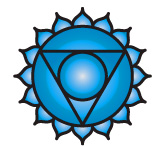 Vishuddha (also Vishuddhi) may be understood as relating to communication and growth through expression. This chakra is paralleled to the thyroid, a gland that is also in the throat and which produces thyroid hormone, responsible for growth and maturation. Symbolized by a lotus with sixteen petals. Vishudda is characterized by the color light or pale blue, or turquoise. It governs such issues as self-expression and communication. Physically, Vishuddha governs communication, emotionally it governs independence, mentally it governs fluent thought, and spiritually, it governs a sense of security. Vishuddha (also Vishuddhi) may be understood as relating to communication and growth through expression. This chakra is paralleled to the thyroid, a gland that is also in the throat and which produces thyroid hormone, responsible for growth and maturation. Symbolized by a lotus with sixteen petals. Vishudda is characterized by the color light or pale blue, or turquoise. It governs such issues as self-expression and communication. Physically, Vishuddha governs communication, emotionally it governs independence, mentally it governs fluent thought, and spiritually, it governs a sense of security.

Anahata: The Heart Chakra

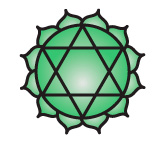 Anahata or Anahata-puri, or padma-sundara is related to the, thymus, located in the chest. The thymus is an element of the immune system as well as being part of the endocrine system. It produces the T cells responsible for fending off disease and may be adversely affected by stress.. Anahata is symbolized by a lotus flower with twelve petals. Anahata is related to the colors green or pink. Key issues involving Anahata involve complex emotions, compassion, tenderness, unconditional love, equilibrium, rejection and well being. Physically Anahata governs circulation, emotionally it governs unconditional love for the self and others, mentally it governs passion, and spiritually it governs devotion. Anahata or Anahata-puri, or padma-sundara is related to the, thymus, located in the chest. The thymus is an element of the immune system as well as being part of the endocrine system. It produces the T cells responsible for fending off disease and may be adversely affected by stress.. Anahata is symbolized by a lotus flower with twelve petals. Anahata is related to the colors green or pink. Key issues involving Anahata involve complex emotions, compassion, tenderness, unconditional love, equilibrium, rejection and well being. Physically Anahata governs circulation, emotionally it governs unconditional love for the self and others, mentally it governs passion, and spiritually it governs devotion.

Manipura: The Solar Plexus Chakra

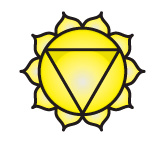 Mainpura or manipuraka is related to the metabolic and digestive systems. Manipura is believed to correspond to Islets of Langerhans, which are groups of cells in the pancreas, as well as the outer adrenal glands and the adrenal cortex. These play a valuable role in digestion, the conversion of food matter into energy for the body. Symbolized by a lotus with ten petals. The color that corresponds to Manipura is yellow. Key issues governed by Manipura are issues of personal power, fear, anxiety, opinion-formation, introversion, and transition from simple or base emotions to complex. Physically, Manipura governs digestion, mentally it governs personal power, emotionally it governs expansiveness, and spiritually, all matters of growth. Mainpura or manipuraka is related to the metabolic and digestive systems. Manipura is believed to correspond to Islets of Langerhans, which are groups of cells in the pancreas, as well as the outer adrenal glands and the adrenal cortex. These play a valuable role in digestion, the conversion of food matter into energy for the body. Symbolized by a lotus with ten petals. The color that corresponds to Manipura is yellow. Key issues governed by Manipura are issues of personal power, fear, anxiety, opinion-formation, introversion, and transition from simple or base emotions to complex. Physically, Manipura governs digestion, mentally it governs personal power, emotionally it governs expansiveness, and spiritually, all matters of growth.

Svadisthana: The Sacral Chakra

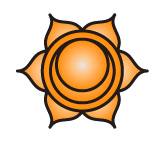 Swadhisthana, Svadisthana or adhishthana is located in the sacrum (hence the name) and is considered to correspond to the testes or the ovaries that produce the various sex hormones involved in the reproductive cycle. Svadisthana is also considered to be related to, more generally, the genitourinary system and the adrenals. The Sacral Chakra is symbolized by a lotus with six petals, and corresponds to the color orange. The key issues involving Svadisthana are relationships, violence, addictions, basic emotional needs, and pleasure. Physically, Svadisthana governs reproduction, mentally it governs creativity, emotionally it governs joy, and spiritually it governs enthusiasm. Swadhisthana, Svadisthana or adhishthana is located in the sacrum (hence the name) and is considered to correspond to the testes or the ovaries that produce the various sex hormones involved in the reproductive cycle. Svadisthana is also considered to be related to, more generally, the genitourinary system and the adrenals. The Sacral Chakra is symbolized by a lotus with six petals, and corresponds to the color orange. The key issues involving Svadisthana are relationships, violence, addictions, basic emotional needs, and pleasure. Physically, Svadisthana governs reproduction, mentally it governs creativity, emotionally it governs joy, and spiritually it governs enthusiasm.

Muladhara: The Base Chakra

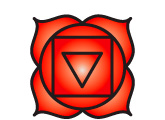 Muladhara or root chakra is related to instinct, security, survival and also to basic human potentiality. This centre is located in the region between the genitals and the anus. Although no endocrine organ is placed here, it is said to relate to the gonads and the adrenal medulla, responsible for the fight and flight response when survival is under threat. There is a muscle located in this region that controls ejaculation in the sexual act of the human male. A parallel is charted between the sperm cell and the ovum where the genetic code lies coiled and the kundalini. Muladhara is symbolized by a lotus with four petals and the color red. Key issues involve sexuality, lust and obsession. Physically, Muladhara governs sexuality, mentally it governs stability, emotionally it governs sensuality, and spiritually it governs a sense of security. Muladhara or root chakra is related to instinct, security, survival and also to basic human potentiality. This centre is located in the region between the genitals and the anus. Although no endocrine organ is placed here, it is said to relate to the gonads and the adrenal medulla, responsible for the fight and flight response when survival is under threat. There is a muscle located in this region that controls ejaculation in the sexual act of the human male. A parallel is charted between the sperm cell and the ovum where the genetic code lies coiled and the kundalini. Muladhara is symbolized by a lotus with four petals and the color red. Key issues involve sexuality, lust and obsession. Physically, Muladhara governs sexuality, mentally it governs stability, emotionally it governs sensuality, and spiritually it governs a sense of security.

1 | 2  |

 |
|  |



